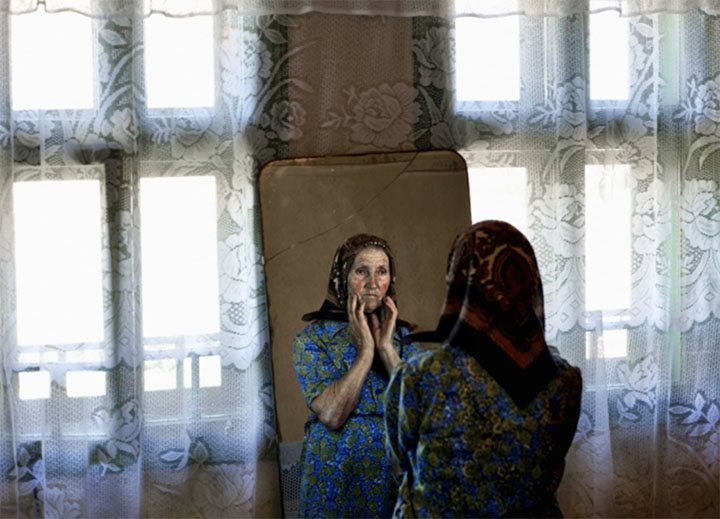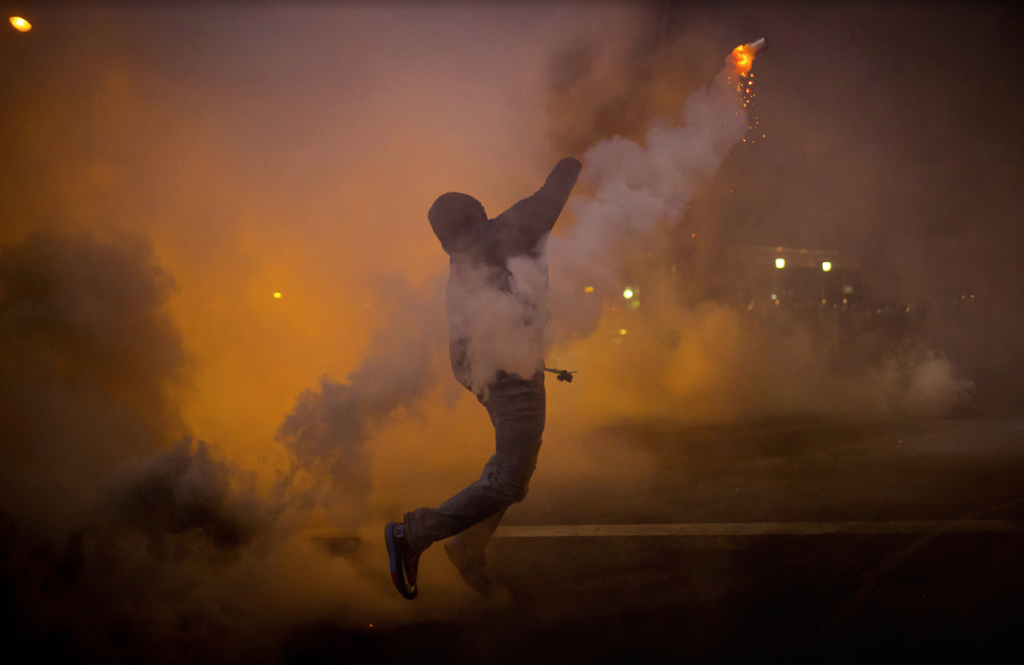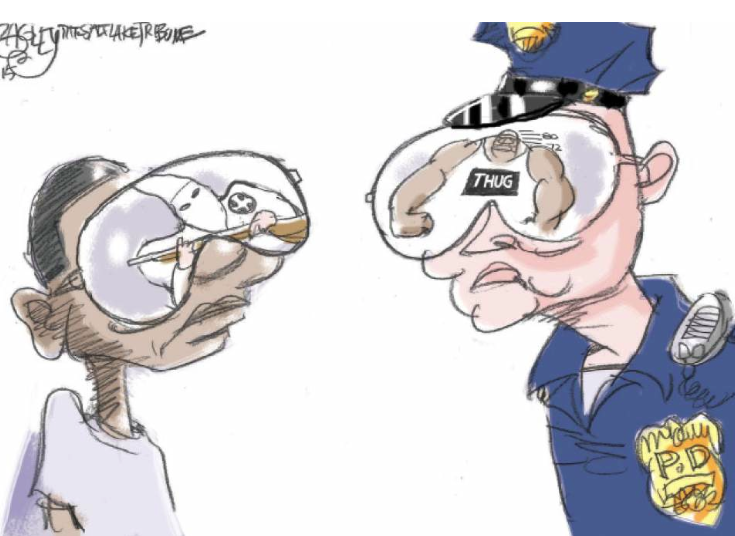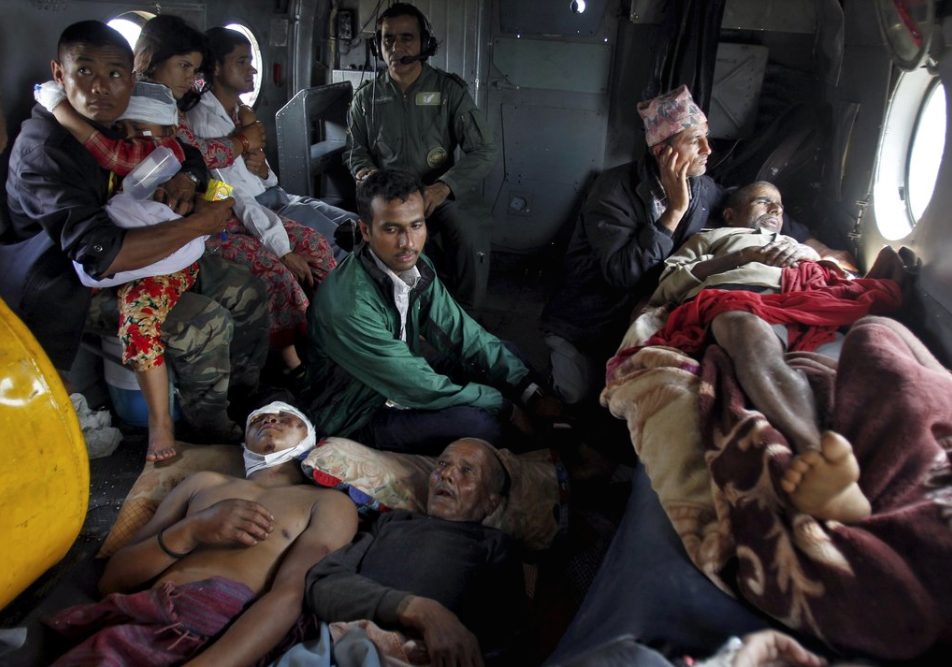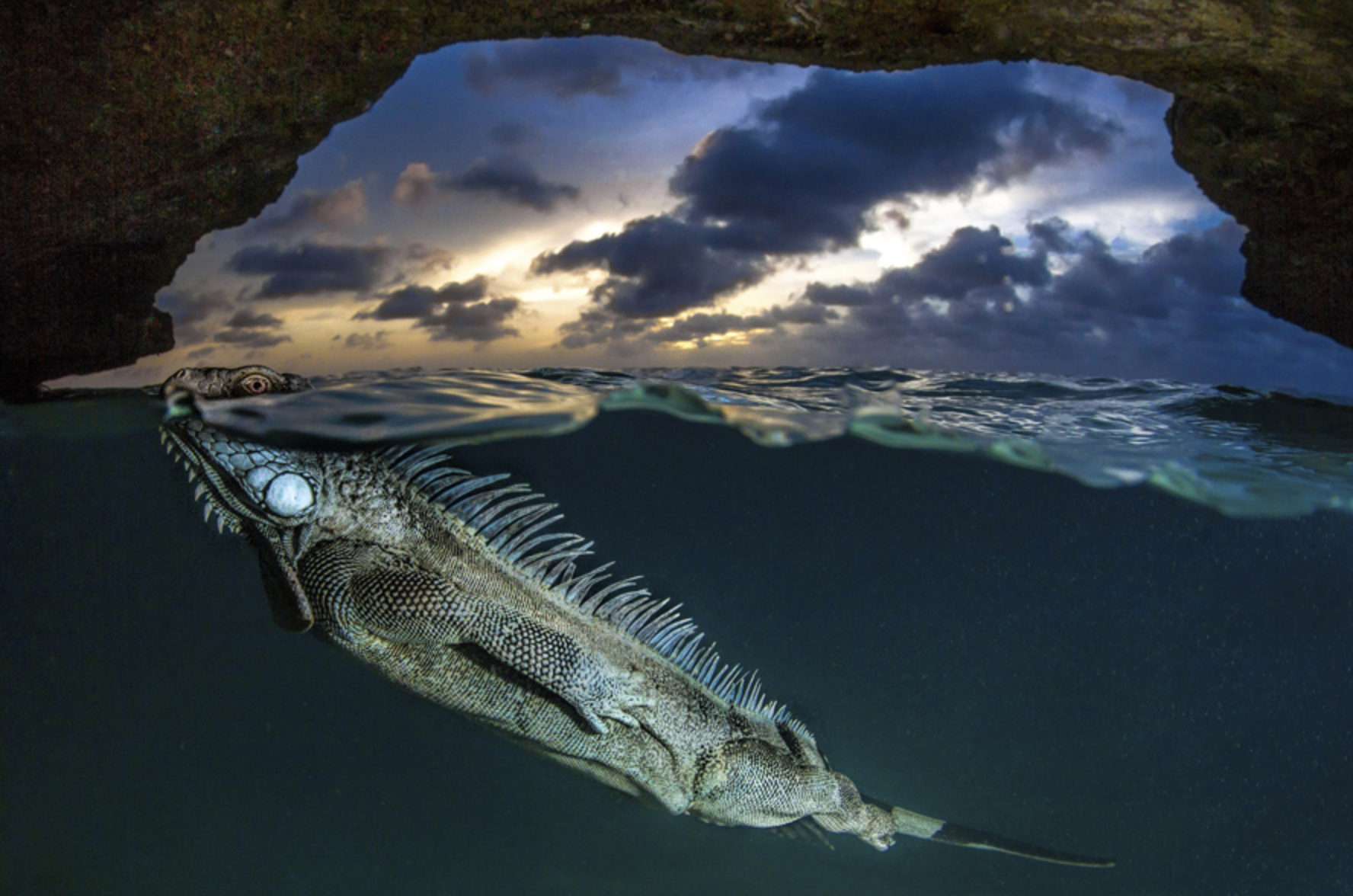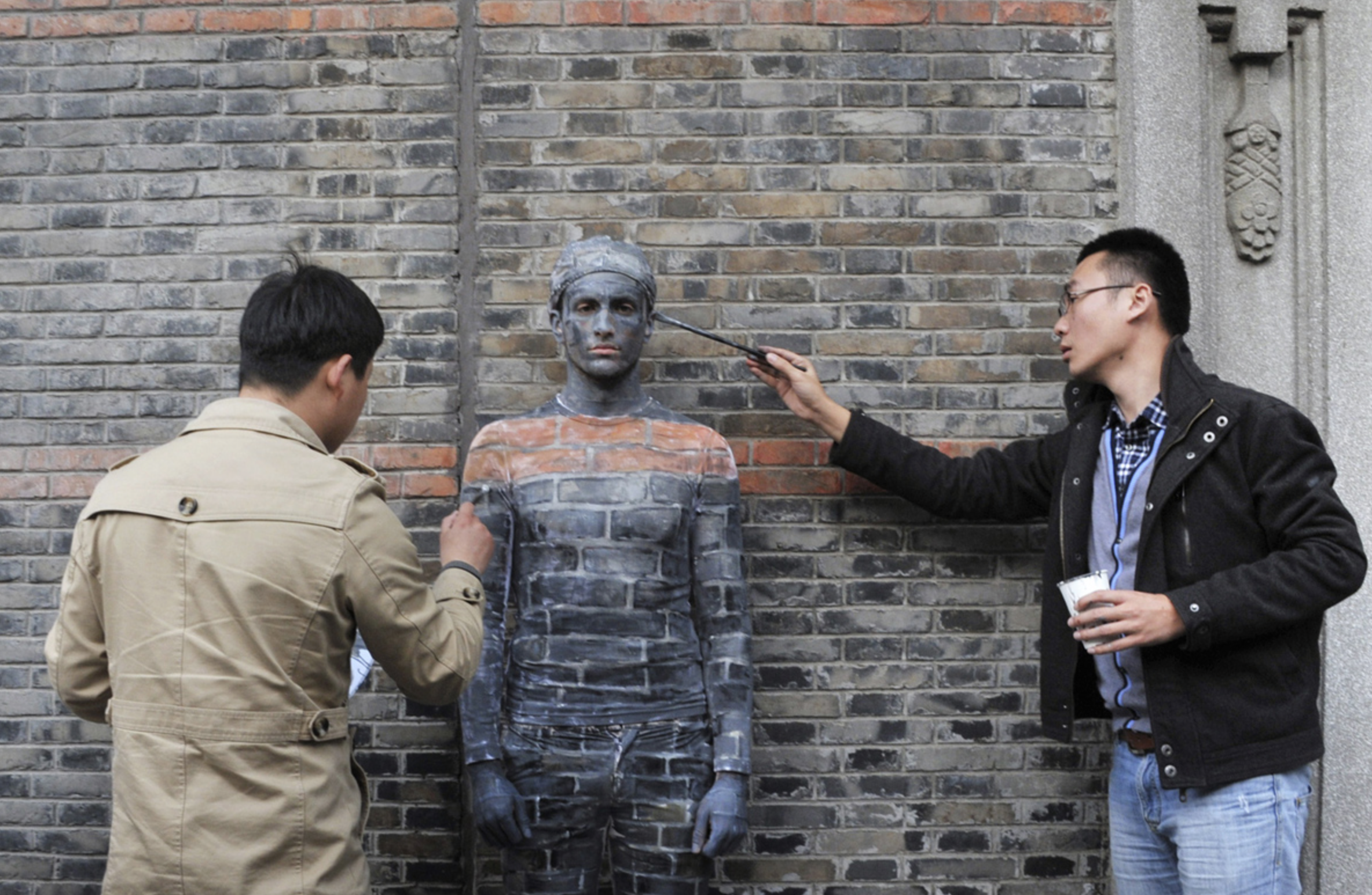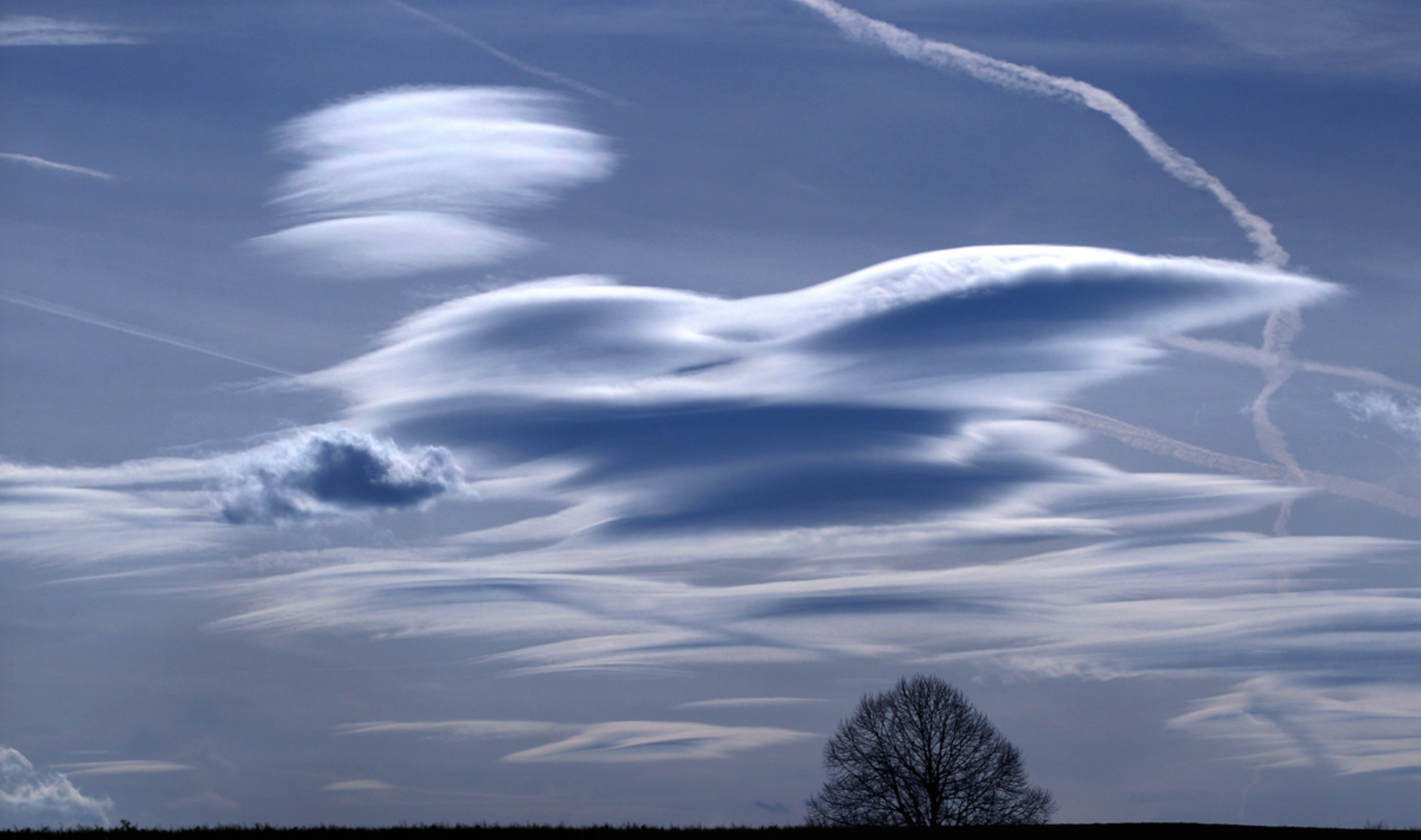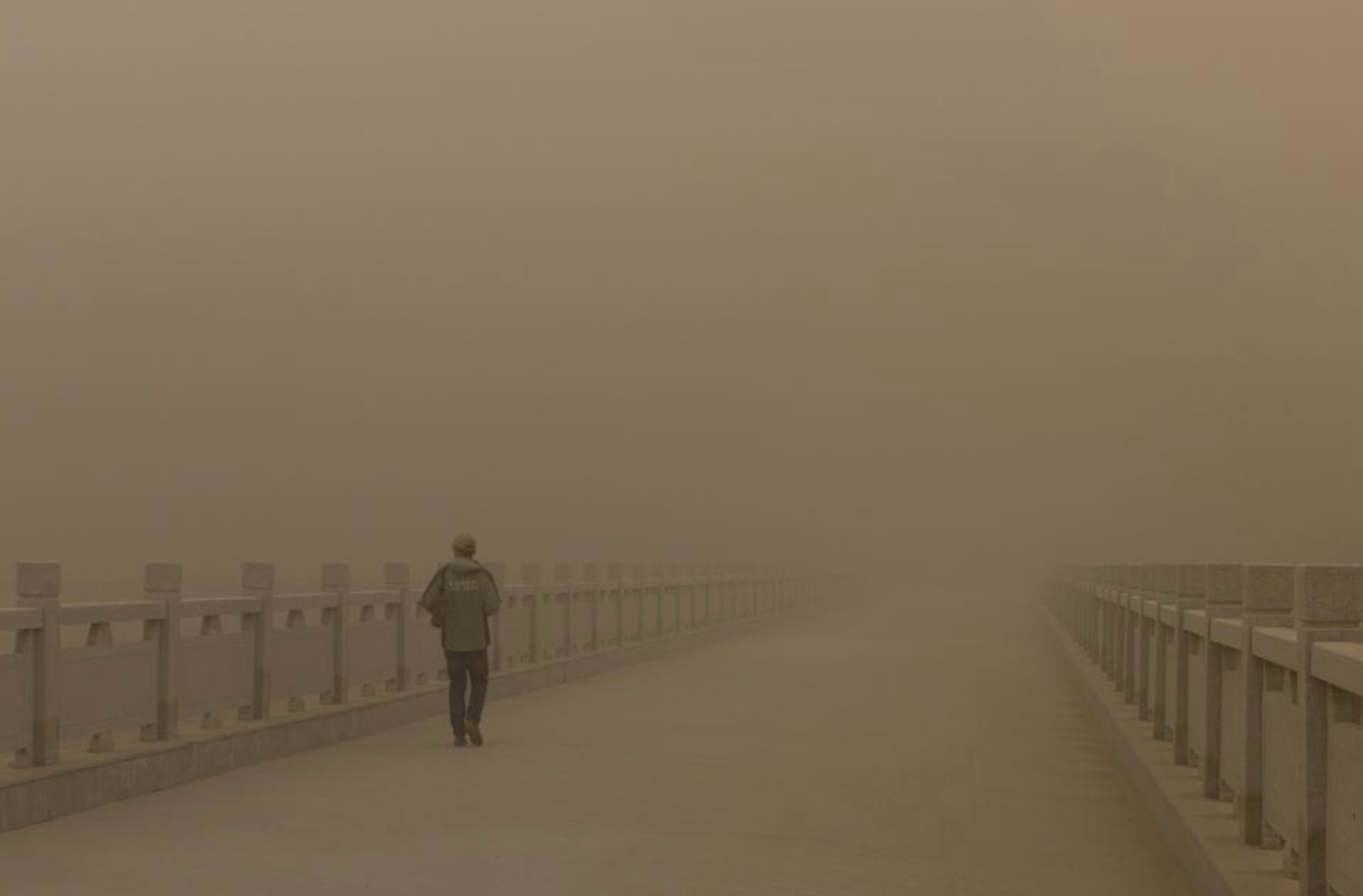We have been allowed to look in on a moment of stunning intimacy. Some say this shouldn’t happen–the camera should not be so intrusive, and the voyeurism is obscene. Furthermore, my emotions of sadness or pity are an indulgence of middle class sentimentality that adds further insult to injury. What they don’t consider is that without those risks, nothing can be shared or learned. Care needs to be taken–by the photographer and by the viewer–but that can be done in order to bring people together in a public world.
And was done: the photographer Tamas Dezso spent several years in Romania and Hungary to document those who have been left to contend with the ongoing catastrophe to which they were abandoned. The exhibition at The Guardian is titled “Postcards from the Ruins,” and it includes this photograph of Anastasia looking into a mirror.
We see her in the mirror–as an image–and also in front of it, and so the photo cues a reflexive awareness. She confronts her image, and studies it, and we can do the same with the photo. She ponders the toll time–and work and illness and worry and much else–has taken. We can do the same. She looks into a ruin of a mirror that is propped up against a curtained wall, between curtained windows behind which blank white light forms another wall. It’s as if everything can be seen only through a veil, as if everything were shrouded for premature burial, as if she were looking at herself in preparation for her own funeral. This world, it seems, is constant deterioration, while the next offers only blinding nothingness. We might want to think about how things got to that point.
And yet, for all the melancholy that suffuses the scene, she is beautiful. The mirror’s portraiture captures so much, from the vibrant blue in her dress to the combination of strength and gentleness in her hands to the daunting candor of her self-examination. It is not hard to imagine that she is seeing not only who she is, but who she was, and perhaps more as well. She knows something about living among the ruins, and though hard earned, it is hers.
I hope she finds consolation in what she has learned, and joy to match and exceed the colors still remaining in her world. The question for us is, what are we to learn from what we have seen here? Good photography can offer something like intimacy, and that can be an occasion for getting close to the knowledge of oneself and the world that intimacy offers. If it is applied only to those in the photo, it probably is only a semblance of knowledge. But if we are willing to see ourselves in her, perhaps we might ponder how her fate overlaps silently with ours.
I’m already old enough to know what it means to see one’s own decline in the mirror. I hope you live long enough to have the same experience, but not for that reason. Part of the beauty of this photograph is the dignity she confers on that experience. May we do so well.
One might consider also how her world is not as remote from this side of the screen as we might think. Some of the bad policies and bad luck that produced post-Soviet poverty also apply to more affluent sectors of the geopolitical system, with the effects buffered only for the time being unless better decisions are made. In a neoliberal economic order, protracted deprivation and indifference can become the order of the day anywhere, even in those places where ruins are still hidden in the mirror, waiting to be seen.
Photograph by Tamas Dezso/the Guardian.
